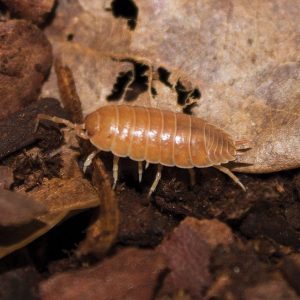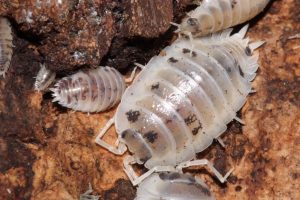Copyright 2021 Evolution Reptiles
All rights reserved.
Copyright 2025 Evolution Reptiles
All rights reserved.
All rights reserved.
Who could ever have predicted that isopods would become such a popular invertebrate pet! We have all heard of them – woodlice, pill bug, sow bug, slater, roly-poly – but few of us would have realised just how many different species there are. They are the most numerous of the land based crustaceans – there are over 3000 species worldwide! – and at least 45 native and naturalised species are found here in the UK.
Their needs are simple. As they breathe using gills like the crabs and shrimp that they are distantly related to, they need damp. The level of humidity needed varies between species, as does the need for ventilation; a lot of the larger Mediterranean species need a lot of cross ventilation and only a small damp area that they can retreat to when they need to rehydrate. As far as we know, they don’t need UV light to thrive – but there hasn’t been any research done on it yet, so anything’s possible!
Feeding is equally straightforward. Isopods are detritivores, which means that they consume dead and decomposing plant and animal material. In practice, the bulk of their diet is best met by using lots of leaf litter, although there are now several specialist foods on the market specifically for them. They also appreciate occasional treats of fruit, fish flakes, and for those that like a little more protein the occasional dog biscuit.
Housing can be as simple or complex as you want it to be. If you are using them as part of your clean up crew in a vivarium then simply make sure that the species you choose is happy within the temperature and humidity range as the main inhabitant. If keeping them as a pet in their own right, then their housing can be as simple as a cricket tub or a dedicated terrarium complete with lighting and different types of plants.
Isopods are live bearers. The females keep their eggs in a pouch under their bodies, and once the babies hatch they stay there until they are strong enough to fend for themselves. Most isopods are fairly easy to breed – give them the right conditions and you’ll soon have plenty!


Copyright 2021 Evolution Reptiles
All rights reserved.